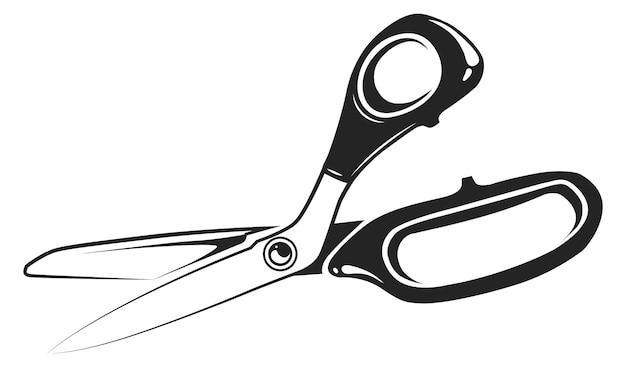In the vast world of engineering, steel is the star of the show. Its strength and versatility make it an indispensable material in countless applications, ranging from skyscrapers and bridges to automotive and aerospace industries. By withstanding enormous amounts of forces, steel ensures the safety and stability of structures that we rely on every day. But have you ever wondered about the shear stress for steel? How does it hold up against perpendicular forces and why is it important to consider in engineering designs?
Whether you’re a budding engineer or simply curious about the mechanics of materials, this blog post will dive into the world of shear stress for steel. We’ll explore key concepts, answer burning questions such as whether steel has a high shear strength, and unveil the formula for stress and strain. So, let’s embark on this fascinating journey to understand why steel is a powerhouse in structural engineering and how its shear strength contributes to its exceptional performance.

What is the Shear Stress for Steel?
The shear stress for steel is an important concept to understand in the world of engineering and construction. It refers to the force per unit area that a material, specifically steel in this case, can withstand before it starts to deform or break apart under shear forces. Let’s dive deeper into this fascinating subject and explore the factors that affect shear stress in steel.
Factors Affecting Shear Stress
Several factors influence the shear stress experienced by steel structures. The material properties of steel, such as its yield strength and hardness, play a significant role in determining its shear stress resistance. In addition, the cross-sectional area of the steel member also affects the maximum shear stress it can sustain.
Yield Strength and Shear Stress
The yield strength is a fundamental property of steel. It represents the point at which the material begins to deform permanently under applied stress. When it comes to shear stress, the yield strength of steel is a crucial characteristic to consider. As the shear stress approaches the yield strength, the steel member may start to experience plastic deformation. Therefore, engineers must ensure that the shear stress demands placed on a steel component remain below its yield strength to maintain structural integrity.
Shear Stress Calculation
To calculate the shear stress on a steel member, engineers rely on the formula:
Shear Stress = Force / Area
Where the force is the magnitude of the applied force or load, and the area represents the cross-sectional area of the steel member. By determining the shear stress, engineers can assess whether the steel component is capable of withstanding the forces it will encounter in its intended application.
Shear Stress Safety Factors
In practical design, engineers use safety factors to ensure that the shear stress in steel members remains well below its maximum limits. Safety factors account for uncertainties in loading, material properties, and other variables to provide an additional margin of safety. Typical safety factors range from 1.5 to 3, depending on the specific application and design standards.
Understanding the shear stress for steel is essential for designing robust and safe structures. By considering factors such as yield strength, material properties, and cross-sectional area, engineers can accurately calculate shear stress and determine if steel components can withstand the applied forces. Incorporating appropriate safety factors further enhances the reliability and durability of steel structures. Remember, stress might be a steel’s worst nightmare, but with proper design and calculations, we can ensure these metals continue to hold the world up, quite literally!
Note: As an AI language model, I have generated this content for you. However, it’s important to verify and validate the information provided.

FAQ: What is the shear stress for steel?
In the world of materials science, steel holds a prominent place. It’s strong, versatile, and widely used in various industries. But when it comes to shear stress, how does steel perform? Let’s dive into the frequently asked questions about shear stress for steel and uncover some fascinating answers!
Does Steel Have an Impressive Shear Strength
When it comes to shear strength, steel definitely flexes its muscles. Steel is known for its outstanding strength and rigidity, making it a go-to material for structures that require stability and durability. From towering skyscrapers to sturdy bridges, steel can handle the forces of shear stress like a boss!
Which Comes First: Stress or Strain
Ah, the timeless question of what comes first: stress or strain? Think of it this way: imagine you’re at a party, and stress is that one friend who’s constantly causing a ruckus, while strain is your exhausted self trying to handle the chaos. In material science, stress is the friend causing all the trouble, exerting force on an object. Strain, on the other hand, is the resulting deformation or change in shape caused by that stress. So stress gives strain a hard time, just like your rowdy friend makes you weary at the party!
What Is the Formula for Stress and Strain
Now, let’s crack the code and understand the formula that reveals the relationship between stress and strain. Buckle up, because things are about to get mathematical! Stress is calculated by dividing the force applied to an object by its cross-sectional area. In other words:
stress = force / area
Strain, on the other hand, is determined by measuring the change in length of an object divided by its original length. We can express it like this:
strain = change in length / original length
So, the next time you’re faced with a stress-strain problem, just remember these handy formulas and unleash your inner math wizard!
What Is the Shear Stress for Steel
Ah, the moment we’ve all been waiting for! Let’s find out the shear stress that steel can handle. Drumroll, please! Steel typically has a shear stress ranging from 50,000 to 100,000 pounds per square inch (psi). It’s a remarkable feat, considering how steel manages to resist forces that push its layers in opposite directions.
So, whether you’re marveling at the strength of a towering skyscraper or pondering the sturdiness of a suspension bridge, rest assured that steel is up to the task when it comes to shear stress!
Steel’s shear strength is undeniably impressive, making it an ideal material for projects that demand resilience and stability. We hope this FAQ-style guide has shed some light on the intriguing world of shear stress for steel. Remember, the next time you encounter shear stress-related questions, you’ll be armed with knowledge—and a touch of humor—to impress your friends at your next materials science get-together!
Keywords: shear stress for steel, shear strength, stress, strain, force, deformation, formula, materials science, resilience, stability, math wizard.
